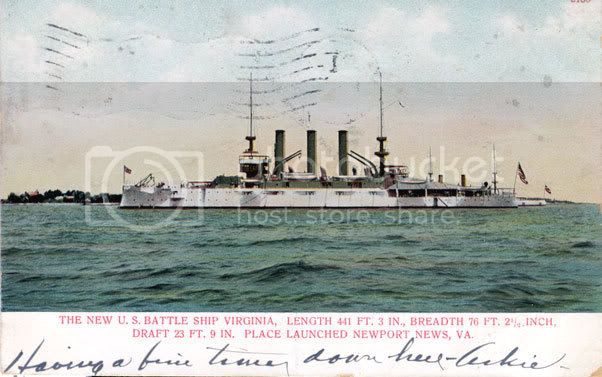
General Statistics
Displacement: 14,900 tons
Length: 441.3 feet
Beam: 76.3 feet
Draft: 23.8 feet
Speed: 19 knots
Complement: 916 officers and men
Armament: 4 x 12 inch guns
8 x 8 inch guns
12 x 6 inch guns
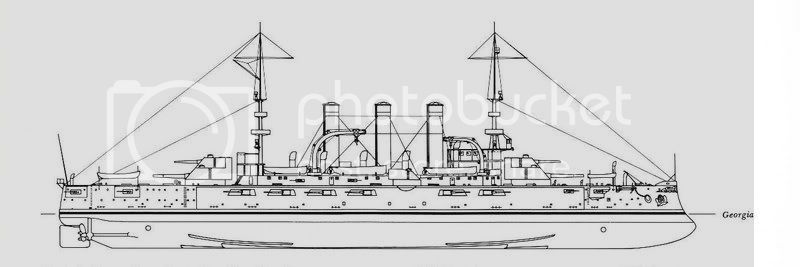
The USS Virginia (BB13) was the lead battleship of her class of five.
She was laid down on the 21st of May 1902 by the Newport News Shipbuilding and Dry Dock Company, Newport News, Virginia. The USS Virginia was launched on the 6th of April 1904 and sponsored by Miss Gay Montague, daughter of the Governor of Virginia. She was commissioned on 7th of May 1906, with Capt. Seaton Schroeder in command.
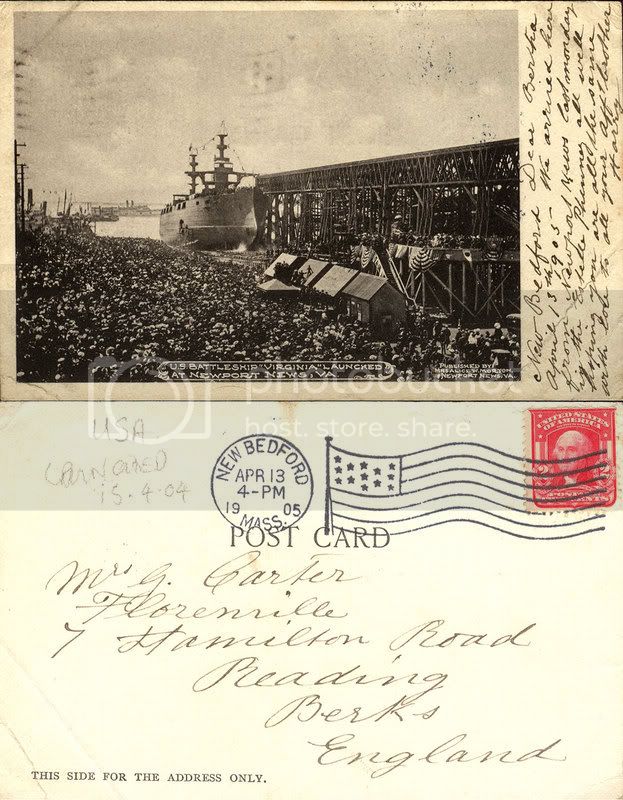
After fitting out, USS Virginia conducted her shakedown cruise in Lynnhaven Bay, Virginia, off Newport, Rhode Island, and off Long Island, New York before she put into Bradford, Rhode Island, for coal on the 9th of August 1906. After running trials for the standardization of her screws off Rockland, Maine, the mighty battleship maneuvered in Long Island Sound before anchoring off President Theodore Roosevelt's home, at Oyster Bay, Long Island, from the 2nd of September until the 4th of September, for a Presidential review.
The USS Virginia then continued her shakedown cruise before she coaled again at Bradford.
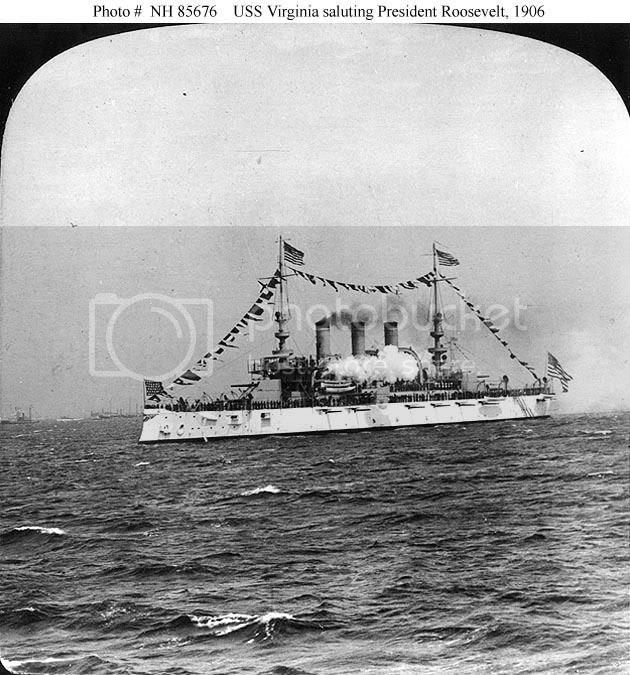
Meanwhile, events were occurring in the Caribbean that would alter the new battleship's employment. On the island of Cuba, in August of 1906, a revolution had broken out against the government of President T. Estrada Palma. The disaffection, which had started in Pinar del Rio province, grew in the early autumn to the point where President Palma had no recourse but to appeal to the United States of America for intervention. By mid-September, it had become apparent that the small Cuban constabulary (8,000 rural guards) was unable to protect foreign interests, and intervention would be necessary. Accordingly, USS Virginia departed Newport on the 15th of September 1906, bound for Cuba, and reached Havana on the 21st, ready to protect the city from attack if necessary. The battleship remained at Havana until the 18th of October, when she sailed for Sewall's Point, Virginia.
The USS Virginia disembarked General Frederick Funston at Norfolk upon her arrival there and coaled before heading north to Tompkinsville to await further orders. She shifted soon thereafter to the New York Navy Yard where she was coaled and drydocked to have her hull bottom painted before undergoing repairs and alterations at the Norfolk Navy Yard from the 3rd of November 1906 to the 18th of February 1907. After installation of fire control apparatus at the New York Navy Yard between the 19th of February and the 23rd of March, the battleship sailed once more for Cuban waters, joining the fleet at Guantanamo Bay on the 28th of March.
Virginia fired target practices in Cuban waters before she sailed for Hampton Roads on the 10th of April to participate in the Jamestown Tricentennial Exposition festivities. She remained in Hampton Roads for a month, from the 15th April to the 15th of May, before she underwent repairs at the Norfolk Navy Yard into early June. Subsequently reviewed in Hampton Roads by President Theodore Roosevelt between the 7th of June and the13th of June, the USS Virginia shifted northward for target practices on the target grounds of Cape Cod Bay - evolutions that lasted from mid-June to mid-July. She later cruised with her division to Newport; the North River, New York City and to Provincetown, Massachusetts, before conducting day and night battle practice in Cape Cod Bay.
Returning southward early that autumn, USS Virginia underwent two months of repairs and alterations at the Norfolk Navy Yard, from the 24th of September until 24th of November, before undergoing further repairs at the New York Navy Yard later in November. She subsequently shifted southward again, reaching Hampton Roads on the 6th of December.
The USS Virginia then spent the next 10 days preparing for the voyage of the Great White Fleet.
After returning from the Great White Fleet cruise and following repairs and alterations that lasted from the 26th of February and into June 1909, the USS Virginia's appearance was transformed by the addition of a new "cage" foremast and the replacement of her original "white and buff" color scheme with the grey of the modern battle fleet.
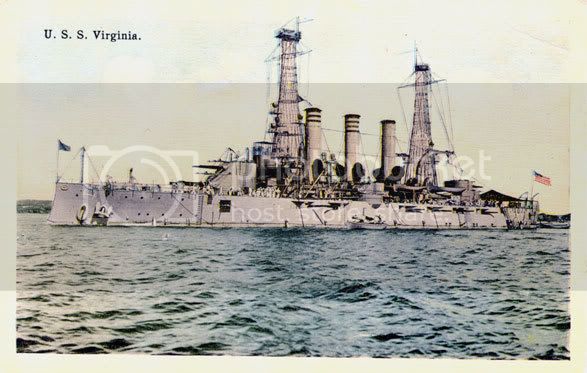
In addition to routine operations along the U.S. Atlantic coast and in the Caribbean area, she visited France and England in late 1909 and tested techniques for coaling at sea in 1910. She also received a second "cage" mast during this time. In 1913 and 1914, the USS Virginia provided naval presence off Mexico, before and during the U.S. intervention at Vera Cruz.
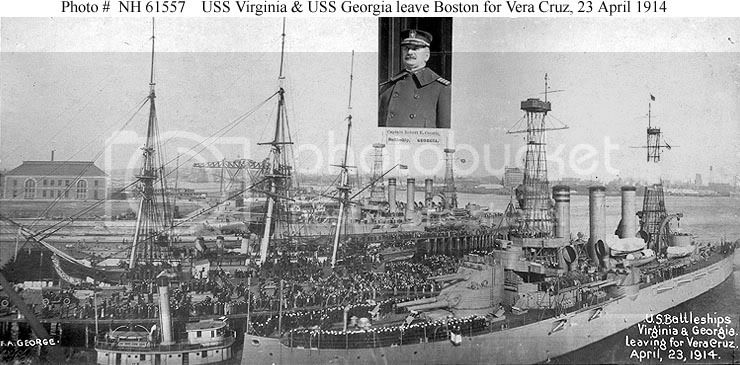
When the United States entered World War I in April 1917, the USS Virginia was out of commission, receiving repairs at the Boston Navy Yard. Returning to active service in August 1917, she was kept busy training sailors for the rapidly-expanding US Navy for the rest of that year and well into 1918, then operated as a convoy escort until the war ended in November.
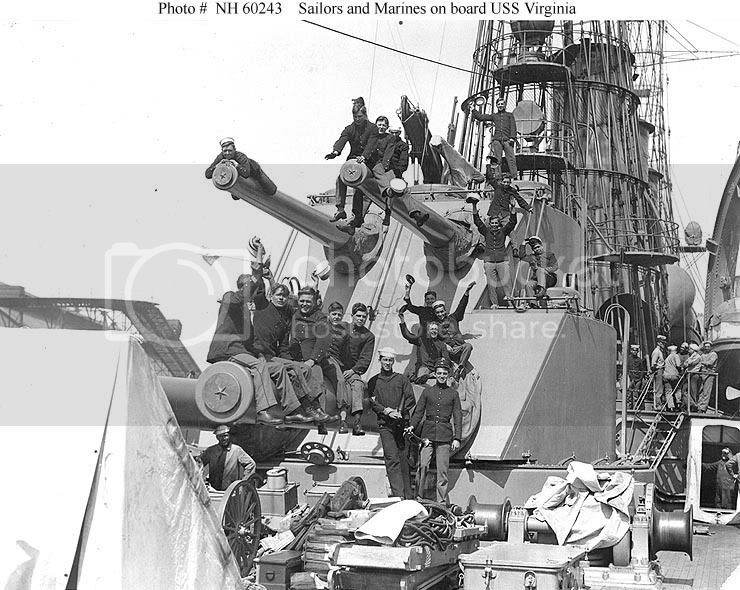
From December 1919 until July 1919, Virginia was employed as a transport, bringing home 6037 war veterans from France.
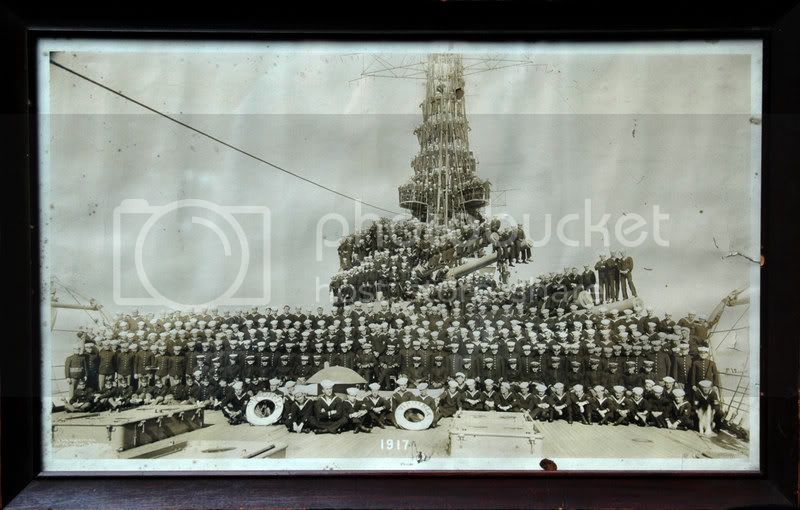
Inactive after that, she received the hull number BB-13 in June 1920 and was decommissioned in the following August.
The USS Virginia was transferred to the War Department in August 1923 for use as a bombing target
The USS Virginia and her sistership New Jersey were taken to a point three miles off the Diamond Shoals lightship, off Cape Hatteras, North Carolina, and anchored there on the 5th of September 1923. The "attacks" made by Army Air Service Martin bombers began shortly before 0900. On the third attack, seven Martins flying at 3,000 feet, each dropped two 1,100 pound bombs on Virginia - only one of them hit. That single bomb, however, "completely demolished the ship as such." An observer later wrote: "Both masts, the bridge; all three smokestacks, and the upperworks disappeared with the explosion and there remained, after the smoke cleared away, nothing but the bare hull, decks blown off, and covered with a mass of tangled debris from stem to stern consisting of stacks, ventilators, cage masts, and bridges."
Within one-half-hour of the cataclysmic blast that wrecked the ship, her battered hulk sank beneath the waves.
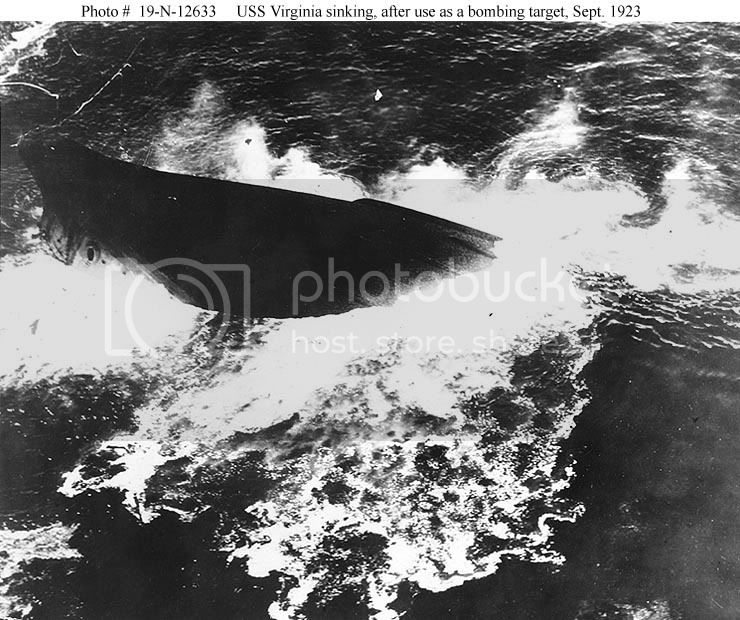
Her sistership ultimately joined her shortly thereafter. Virginia's end, and New Jersey's, provided far-sighted naval officers with a dramatic demonstration of air power and impressed upon them the "urgent need of developing naval aviation with the fleet." As such, the service performed by the old pre-dreadnought may have been her most valuable.
The next instalment will be Captain Hugo Osterhaus
Regards
Sean









